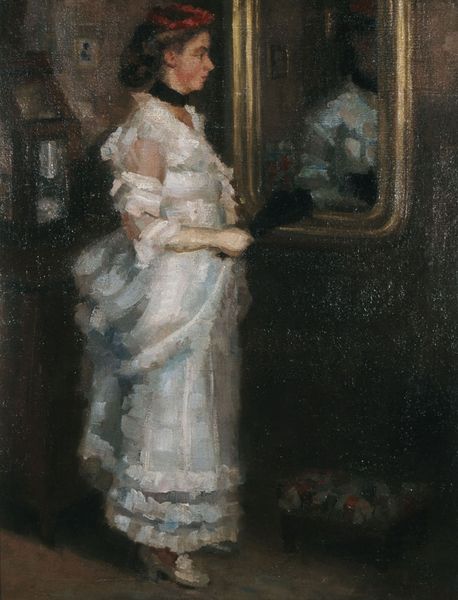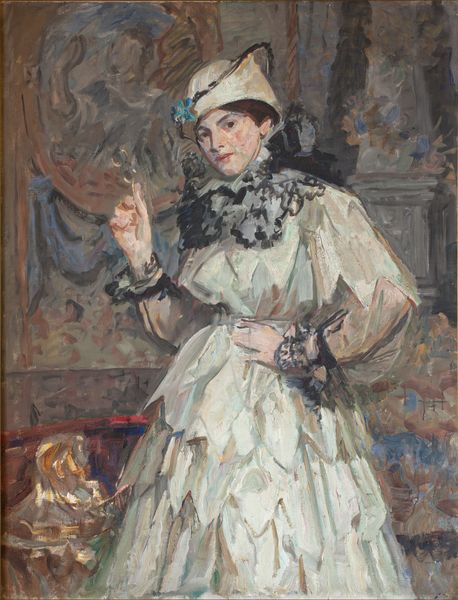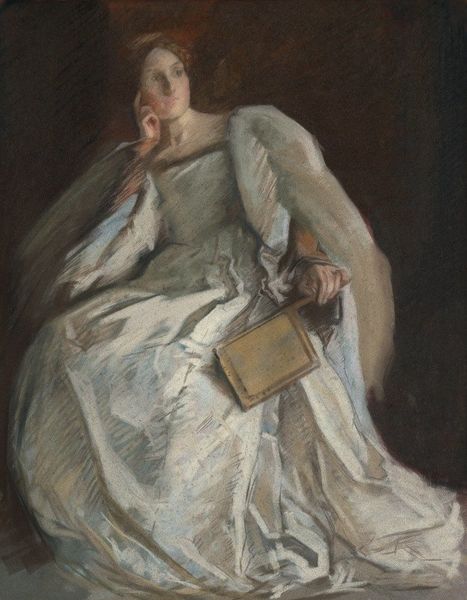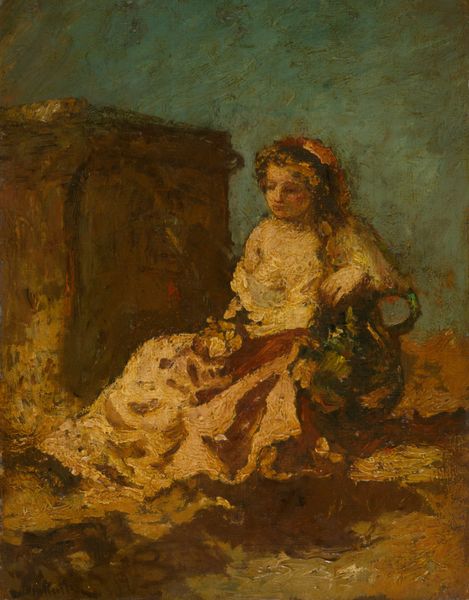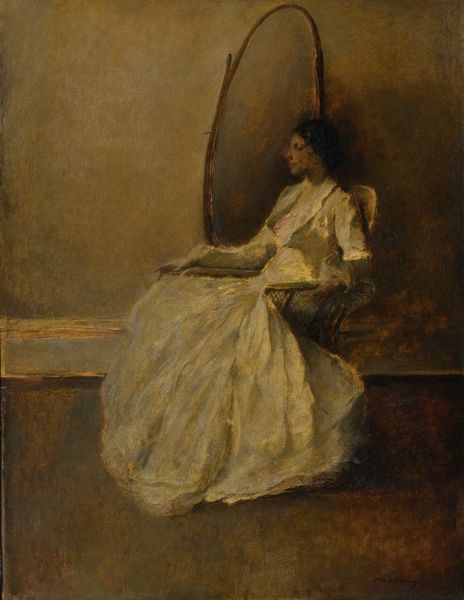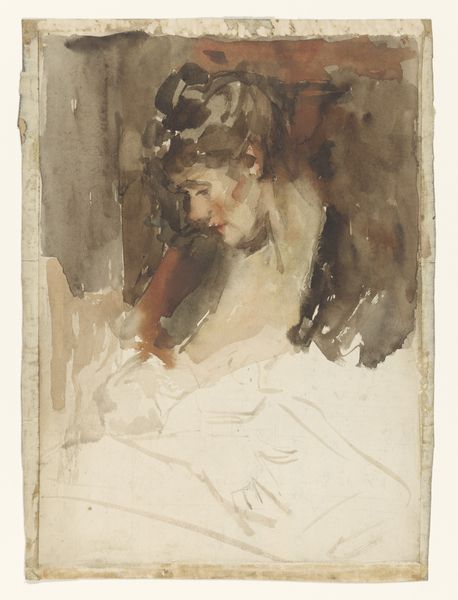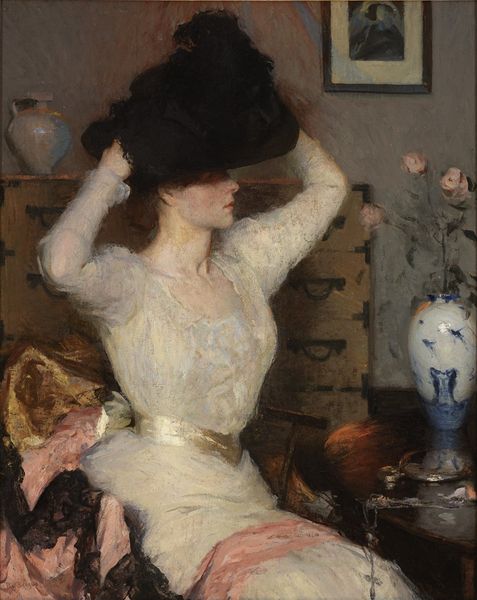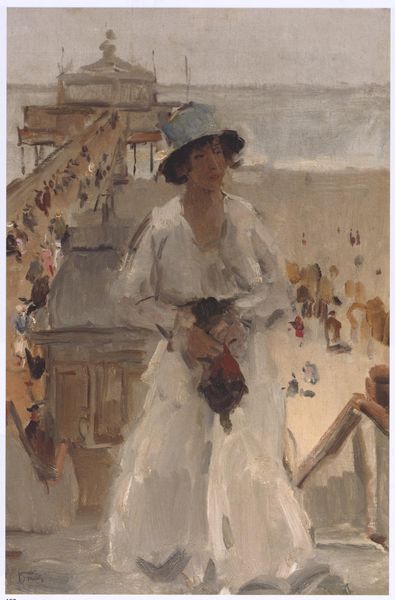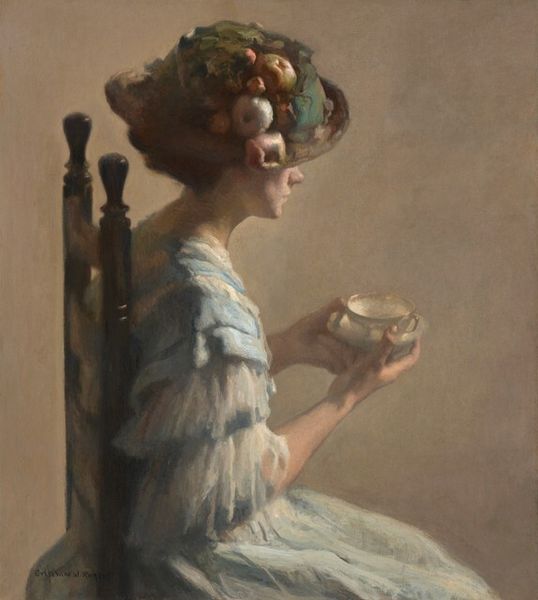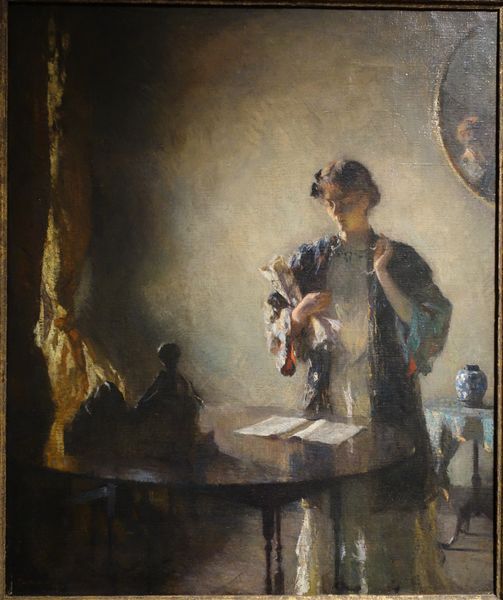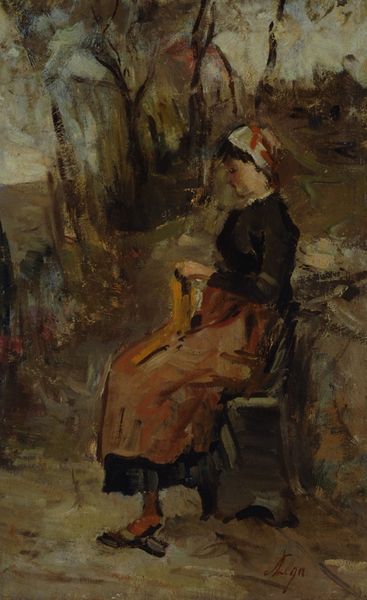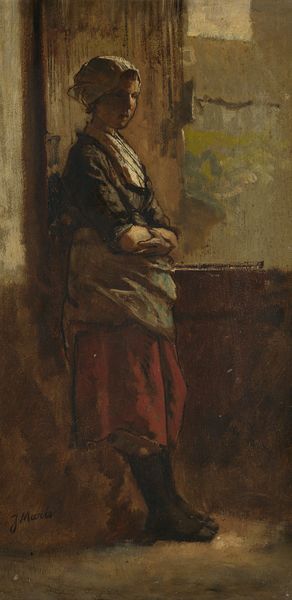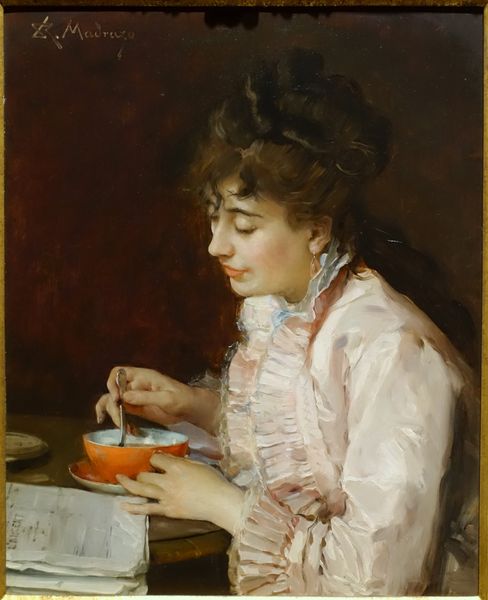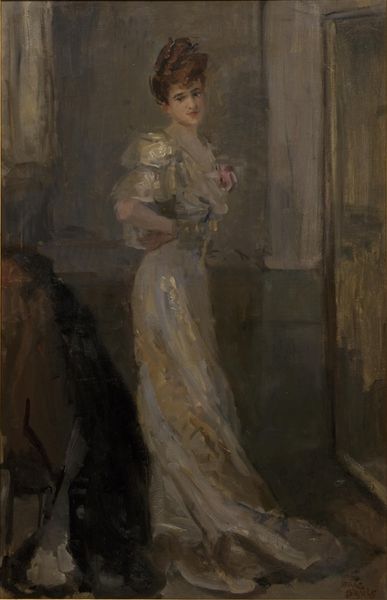
oil-paint
#
portrait
#
oil-paint
#
figuration
#
oil painting
#
genre-painting
Dimensions: 37 x 28 cm
Copyright: Public domain
Curator: Take a look at “Woman with Tray,” an oil painting currently in a private collection and believed to be by Francesco Didioni. Editor: It has this sort of soft, quiet atmosphere. The brushwork is so loose, and she almost blends into the muted tones of the background. It is also evocative. Curator: Exactly! Genre paintings such as this gained traction by depicting scenes from everyday life and are interesting for offering a glimpse into ordinary people, filtered of course through the artist's own view. Do you notice the woman's attire? The artist's handling and depiction of the dress make this simple tray bearer almost a muse. Editor: I do. There's this suggestion of classical drapery. The pitcher too. There is definitely something connecting her to archetypal figures and roles in myths and history. Notice, too, the nearly expressionless way that the painter renders the woman. In one light, it is flat, almost emotionless. But her turned away visage begs the viewer to inquire as to her intentions and station. It's that duality that makes the piece special. Curator: Absolutely, and thinking about the time, consider how the rise of the middle class influenced artistic patronage. These works, offering both escapism and a relatable reflection of daily life, gained popularity in burgeoning art markets. What symbols can we pick up on that can help further classify this interesting piece? Editor: Beyond what we mentioned, I notice that the water jug at her feet seems positioned in relation to her to imply the wellspring of vitality; she’s a caretaker. The water vessel itself references a need to balance material needs with access to a refreshing oasis. So, the image becomes less about an ordinary activity, like carrying a tray, and more about the timeless idea of women and labor. Curator: Precisely, art reflects life but also shapes it by ascribing symbols to the everyday. And understanding these references helps us see how notions like class and labor become intertwined within our social fabric. Editor: The work speaks to how visual languages encode complex emotions. What’s your main takeaway about the historical background now that we've discussed the symbols? Curator: I'm reminded that portraiture like this both reinforced and challenged the status quo, representing women within certain boundaries, yet, possibly questioning their societal roles. Editor: And for me, it highlights art's fascinating ability to fuse the everyday with archetypal narratives, rendering an image rich in cultural memory and emotion.
Comments
No comments
Be the first to comment and join the conversation on the ultimate creative platform.
